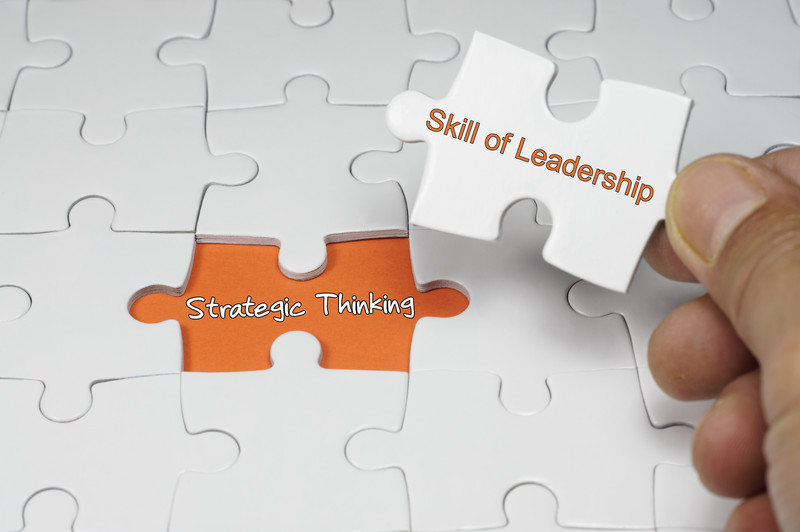Developing and improving strategic thinking skills is necessary to stay ahead of new opportunities, make timely decisions, and respond quickly and effectively to unforeseen threats. This is an important skill for today’s project managers, who hold strategy meetings so that all team members are on the same page about activities and changes. Meeting transcription services ensure that this important verbal communication is accurately documented.

What is strategic thinking? According to www.smallbusiness.chron.com, “Strategic thinking involves making a series of decisions about what actions the company intends to take to become more successful”. Therefore, strategic decision making involves a broad perspective and wide-ranging analysis, planning, and competent decision-making with a long-term approach.
So how can you improve your strategic thinking skills? Here are seven expert tips:
- Understand what is strategic in the context of your industry: A Mckinsey report says that executives need to learn to “think strategically in the context of their own industry”. For instance, in the IT industry, this would mean having a nuanced understanding of strategic subjects such as network effects, platforms, and standards. It’s also important that this is an ongoing process of the dynamic nature of management and executive thinking. In the restaurant business, formulating a winning strategy would mean thinking about factors that can affect its reputation, such as customer experience, online listings, and reviews. In addition to customized education courses, Mckinsey points out that there is a lot of specialized literature on strategic thinking specific to different industries.
-
- Set aside time for strategic thinking and problem solving: Leaders need to set part time just for strategic thinking. In fact, this is difficult for people who constantly multitask. The key is to counter interruptions such as email, phone calls, etc., and schedule at least two hours every week on the calendar for strategic thinking on an important matter. Location is critical too. In her blog on the topic, Elise Mitchell suggests leaving the office for a “stress-free environment, not bound by time or place”, where you can think deeply. Finding time for hobbies and physical exercise can also stimulate creative outflow and ideas, and boost strategic thinking capabilities, say experts.
-
- Start with the end point in mind: A www.news.clearancejobs.com article suggests reframing your thoughts by imagining your endpoint. You need to think about things you are doing now and the resources available to help you with this. You also need to consider the challenges you faced. This will give you a clearer idea on how to reach your goals.
-
- Identify your core competencies and assess the gap your business can fill: Don’t simply look for external opportunities. First, assess your company’s strategic differentiators and unique competencies. This will help you understand where there is a gap in the market that your company could fill with a new initiative, business model, product, venture, or innovation, says a Forbes article.
-
- Become an expert in recognizing potential disruptors: Learn to identify potential disruptors in your industry. Disruptive innovations can completely change the market. Examples include: new technology, new ways of solving problems, and new ways of cost cutting. Foresight is necessary to identify disruptors. You need to keep an eye on the activities of long-standing competitors as well as nascent competitors.
-
- Widen your perspective: To improve strategic thinking, expand your perspective from several angles and align your efforts to the goals of your organization and the needs of the market. Add new resources, meet new people. Read extensively – blogs, newsletters, research reports and other material can help broaden your perspective. In addition to industry specific information, make sure you are up to date on international events and political and social trends.
-
- Ask questions and challenge assumptions: A strategic leaders asks questions and challenges conventional ideas. Being open to new ideas will help you analyze issues more effectively and find the right solutions.
Finally, keep employees informed on what is happening in the company and its broader organizational strategy via meetings, conferences, presentations, etc. Business transcription services are available to capture and document the audio and video content from these interactions. Mckinsey highlights that their strategy journey model described involves meeting for two to four hours every week or two to discuss strategy topics. Each executive is required flag issues and discuss them.



